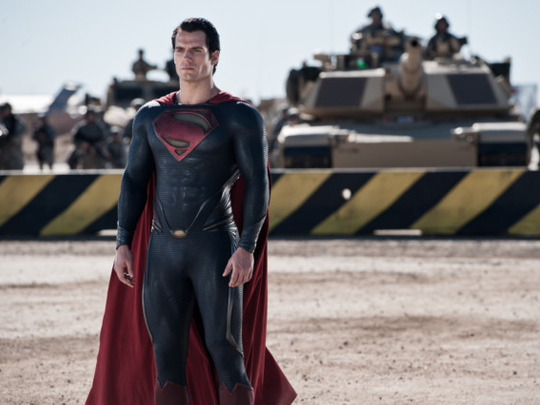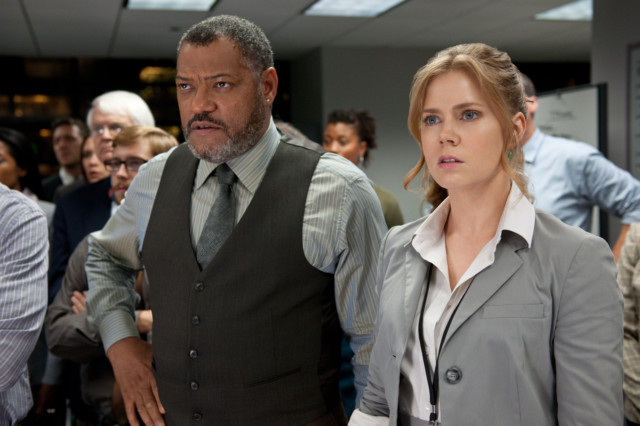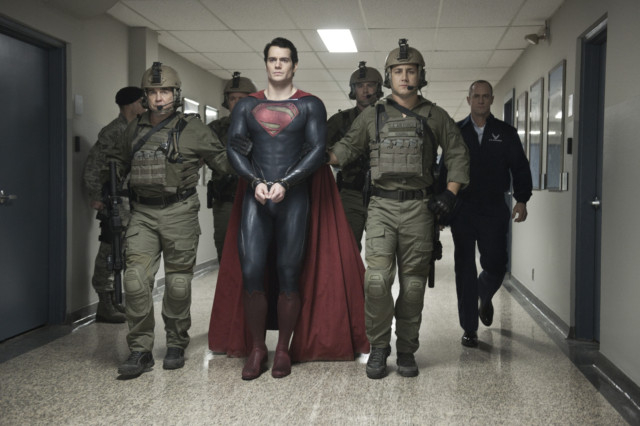
Superman: the Movie became the film that kicked off cinema’s superhero era; the tone, then, was jaunty self-parody, acknowledging correctly that the jaded decade in which it arrived could not support a face-value treatment of this straight-arrow comic-book hero.
Fast forward 35 years and Superman is a very different beast: a lone voice for truth, justice and the American way with an expensive, uninspired attempt at a reboot 2006’s Superman Returns behind it, and a cinematic universe currently overrun by Marvel’s pop art team movies.
Well, hopes are high for Man of Steel. Directed by Watchmen’s Zack Snyder, and produced and conceived by The Dark Knight Rises’ Christopher Nolan, Man of Steel treads a familiar route at first: Superman as he is almost never called in this film is born as his home planet Krypton is disintegrating into civil war and environmental catastrophe, and is sent into space by his father Jor-El just ahead of Krypton’s destruction.
Russell Crowe, with a plummy English accent as thick as a cupboard, plays the self-sacrificing father; he does rather well in the complicated opening scenes, which simultaneously introduce the rebellious General Zod (Michael Shannon), Krypton’s rather zany liquid-metal communication-devices, and a visual style that smothers everything in a kind of irradiated backlit CGI.
It’s when we get to Earth that Man of Steel starts to take on its distinctive shape. Clark Kent played by Henry Cavill with a permanent little worry-frown in the middle of his forehead is revealed as a rootless drifter, blundering from one low-paid job to another in a frustrating battle to keep his taunters unbattered, his rescuees oblivious, and his inner demons placated.
A series of sharp flashbacks show the roots of his emotional malaise: an adoptive father (Kevin Costner) who is pre-emptively convinced his boy will be hated and feared for his gifts.
This, it would seem, is Nolan’s principal innovation for this Superman: reminiscent, perhaps, of Batman Begins, this is superheroism as a burden, and a burden transformed into neurosis.
The scenes where little Clark begins to discover his special powers are rather impressive to behold he’s baffled, and traumatised by the unwelcome intrusion of x-ray vision or laser-like heat beams from his eyes.
It’s this early part of the film that is most successful; Nolan and Snyder, along with scriptwriter David S Goyer, have created a plausible context for the introspection and self-doubt that dogs the adult version of their costumed warrior.
Rather less triumphant is the introduction of the allegedly Pulitzer-prize-winning reporter Lois Lane (Amy Adams); she encounters Clark not in the newsroom of the Daily Planet, but when the nascent Superman is toting baggage as a gofer on a military mission to recover a mysterious alien vessel from 20,000-year-old pack ice.
Lane, as it happens, has much the more interesting narrative assigned to her attempting to track the elusive superhero down, while trying to avoid the attentions of various security agencies but her character is conceived far more sketchily than Kent’s, with the result that the normally watchable Adams can’t do much more than try for a kind of relentless perkiness as a counterweight to Cavill’s frowning humourlessness.
It has to be said that the failure to cook up much in the way of meaningful interaction for the pair throughout the film’s midsection means that Man of Steel begins to labour even as the visual spectacle intensifies: no amount of whip-pans and crash-zooms, spaceship flameouts or collapsing edifices can compensate for an inert focal relationship.
The whole film ends up feeling weighed down: though Man of Steel bounds from one epic setpiece to another, you’re left with the nagging feeling that you just can’t work out what the central twosome see in each other.
And for Superman and Lois Lane, that’s hardly ideal.










